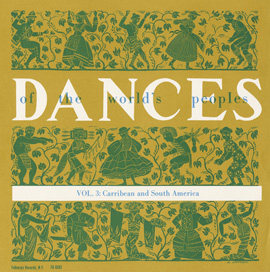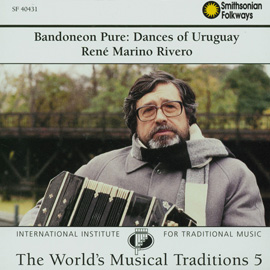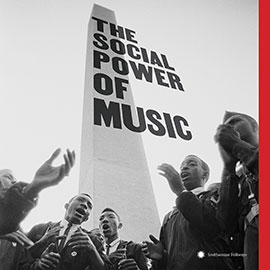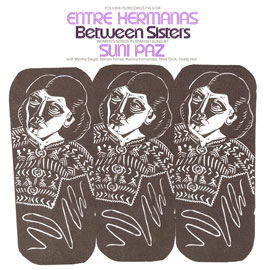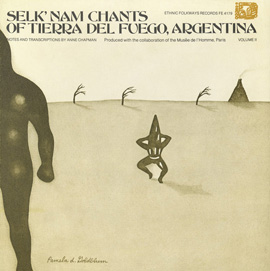Summary
The goal of the lesson is to introduce students to two contrasting dance traditions from Argentina: the Chacarera and the Tango. Elements of the music used to accompany both types of traditional dance will be explored.
Suggested Grade Levels: 6-8
Country: Argentina
Region: South America
Culture Group: Argentinean
Genre: Tango; Dance
Instruments: Hand drums, Shakers
Language: Spanish
Co-Curricular Areas: Dance, Social Studies
National Standards: 2, 6, 8, 9
Prerequisites: None
Objectives:
- Listening (to instrumental timbres, rhythms, ostinatos)
- Playing (rhythms)
- Movement (to simple duple and triple patterns, movement in pairs to travel across room)
- Understanding the culture, people, and traditions of Argentina
- Acknowledging the difference between Argentine Tango and Ballroom Tango
Material:
- “Chacarera” from Dances of the World's Peoples, Vol. 3: Caribbean and South America, (FW06503)
- “El Choclo (Tango Criollo)” performed by Rene Marino Rivero, from Smithsonian Folkways World Music Collection, (SFW40471)
- Maps of South America and Argentina
- Hand drums and shakers
Lesson Segments:
- “Chacarera” (National Standards 2, 6, 9)
- “El Choclo” (National Standards 6, 8, 9)
1. “Chacarera”

“Chacarera”
from The Dances of the World's Peoples, Vol. 3: Caribbean and South America (1958) | FW06503
- Listen to the “Chacarera” recording.
- Raise your hand when you notice a change in the meter
- Gently tap knees during 3/4 meter and sway during 6/8 meter
- Traditionally, the Chacarera is a group dance and begins with beating the feet on the floor during the intro.
- Try stepping to the beat on the floor during the opening, then move to simple triple and duple compound meters as before
- Instruments typically used in the Chacarera include:
- Guitar
- Violin
- Accordion
- Bombo leguero (a drum made of a hollowed tree trunk)
- The melody (in 6/8) usually follows the bombo (in 3/4).
- Where in this Chacarera would the bombo part be played?
- Pass out hand drums and shakers.
- Hand drums play on the beat during 3/4 sections of the listening example
- Shakers play on the beat during 6/8 sections of the listening example
- The Chacarera began in Northwest Argentina.
- The name is derived from the word “chacra” (farm)
- The dance became very popular in rural areas and eventually moved to the cities
- When the Chacarera eventually arrived in Buenos Aires, it failed to meet the popularity of what other traditional Argentine dance? (Tango)
- Locate Argentina on the map.
- Identify Buenos Aires
Assessment: Are students able to recognize the meter change? Are students able to move in triple simple and duple compound meters? Are students able to discuss the material in an age appropriate manner?
2. “El Choclo”
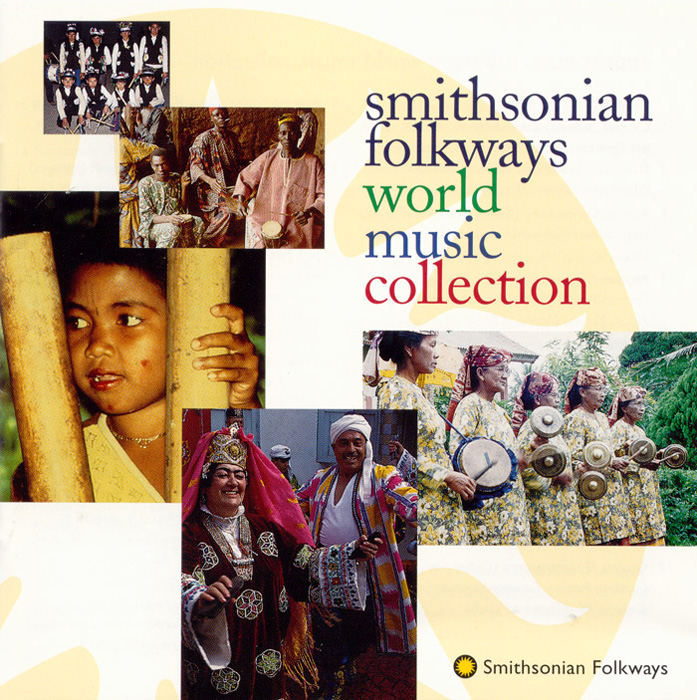
“El Choclo (Tango Criollo)”
from Smithsonian Folkways World Music Collection (1997) | SFW40471
- Locate Argentina and Uruguay on the map as this is the birthplace of tango in South America.
- Identify Buenos Aires on the map
- Buenos Aires is the center of Argentine Tango
- The tango dance originated in Buenos Aires in the late 19th century and was a fusion of European styles.
- Tango music is usually performed by a sextet including:
- Violins
- Piano
- Double bass
- Bandoneons (which are similar to accordions)
- Listen to the “El Choclo” recording for which instruments are used.
- In what ways is the recording of “El Choclo” consistent or inconsistent with the instrumental traditions of tango music? (only accordion is used)
- Consider the differences between Argentine Tango dancing and Ballroom Tango.
- Argentine Tango can be danced with a closed embrace (traditional) or an open embrace which allows for more improvisational movement
- Chests are closer than hips, and in closed form, partners dance cheek to cheek
- In either closed or open form, complete contact is made along the embracing arms for the best communication
- In Ballroom Tango form, partners have contact at the hip, but their upper bodies arch away from each other
- Tango form, whether open or closed, is always relaxed, like a hug
- Practice in pairs setting Ballroom and Argentine frames for Tango dancing
- Another difference in tango styles is the walking.
- In most ballroom forms, the normal walk is used (when a leader steps forward with left, the partner steps back with right)
- This is called parallel or even walking
- Try parallel/even stepping in pairs to “El Choclo” (movement around the room should be counterclockwise)
- In Argentine Tango, crossed or uneven walk is used. (Leader steps with left foot, follower steps with left foot)
- Try crossed /uneven walk in pairs to “El Choclo”
- Discuss the differences in how legs and feet must be arranged for the two types of walking.
Assessment: Are students able to compare and contrast Argentine and Ballroom tango? Are students able to identify which instruments are used? Are students able to demonstrate the frames and walking styles of the two tangos? Are students able to discuss the material in an appropriate manner?


